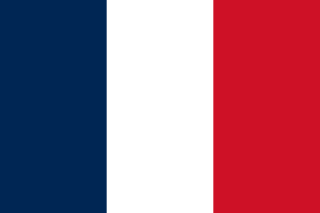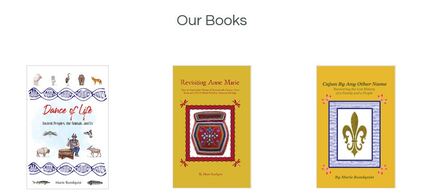|
A Portrait of the Family of Germain Doucet Sieur de Laverdure of France and the 1649 Will of Sieur Charles de Menou d’Aulnay by Deadra Doucet Bourke and Marie Rundquist October 2023 Recently, Deadra Doucet Bourke and I had the occasion to review a number of documents which had been sent to the Acadian Amerindian Ancestry Project by a long-time member. One in particular, originally written in 2019, in draft form, and later updated, concerned the Will of Sieur Charles de Menou d’Aulnay. Named in d’Aulnay’s Will, which was recorded in 1649, was his close friend, Germain Doucet Sieur de Laverdure of France, b. 1595, the military commander of the French fort at Port Royal during Acadia’s earliest days. In his Will, Sieur Charles de Menou d’Aulnay expressed his greatest admiration and generosity towards his true and loyal friend, Germain Doucet of France. By also portraying his family members and their relationships as he did in his Will, d’Aulnay, in a way, framed a “portrait” of the family of Germain Doucet as known to him at the time. Who might d’Aulnay have included when he framed his portrait of the family of Germain Doucet Sieur de Laverdure of France in his Will? But more importantly, who was left out? Referencing the Acadian Amerindian Ancestry DNA Project’s original 2008 finding of a Native American Y DNA haplogroup (C-P39) for a man who traced his patrilineal line to Germain Doucet b. 1641, and the test results of other Doucet men who shared the same ancestor, who were found to belong to the same Native American Y DNA haplogroup, we may exclude Germain Doucet b. 1641 from being the biological son of Germain Doucet of France, or, for that matter, the biological brother of Pierre Doucet b. 1621.
While the DNA results we have in the Acadian Amerindian Ancestry DNA Project help us identify and categorize the different Native American and European Doucet surname lineages represented, as stewards of our heritage, we want to find out more about the “how” and “why” behind these DNA findings and their implications for the family of Germain Doucet Sieur de Laverdure of France. And so, to add to the body of DNA evidence we have about the family of Germain Doucet of France, we share the following information a project member sent to us, in 2019, about the Will of Germain Doucet, Sieur de Laverdure’s close friend, Sieur Charles de Menou d’Aulnay, where the author states (quoting directly from his letter): “… To further complicate the situation, there has been no documentation found to date that even suggests that “Germain Doucet, Sieur de Laverdure” had children of his own. So, in summary, where we find Germain, his wife, a niece, and a nephew clearly identified by d’Aulnay in his Will, which he signed in 1649, we do not find a "son," “Germain Doucet” b. 1641 or, for that matter, another "son," “Pierre Doucet” b. 1621. There were no references to either Doucet in d’Aulney’s Will! Were they to have been Germain’s "sons," as they were clearly in the picture at the time d'Aulnay drafted his Will, surely d’Aulnay, who expressed his great affection for Germain and his concern for the well-being of his wife, his niece, and nephew in his Will, would have made provisions for them. He did not. The DNA evidence we have gathered to-date bears out why: Germain Doucet b. 1641 could never have been the biological son of Germain Doucet of France, and likewise, Germain Doucet b. 1641 could never have been the biological brother of Pierre, born 1621. As we found when we referenced project data, The Y chromosome DNA of their patrilineal, male descendants does not match up! For now, if not at the Louvre Museum in Paris, Sieur Charles de Menou d’Aulnay’s metaphorical portrait of “The Family of Germain Doucet Sieur de Laverdure” which he "painted" so eloquently in the text of his Will in 1649, that includes his friend, Germain Doucet of France, Germain’s wife, and Germain’s niece and nephew, hangs prominently on the wall of the Acadian Amerindian Ancestry DNA Project. We plan to revisit d'Aulnay's portrait of “The Family of Germain Doucet Sieur de Laverdure” from time to time, along with the genealogies, records, and DNA results of our project members, whenever new questions about old ancestors arise. References:
To any family researcher who shouts, or has ever shouted, "I JUST FOUND [fill in the blank ancestor]" just when you thought you would NEVER FIND [fill in the blank ancestor] by reading through EVERY PAGE of a civil or parish register, I dedicate the following post:
I had the occasion to recommend a couple of reliable sources on Wikitree, which I cited while adding family profiles to that system. Happily, the feedback received in response to my recommendations, appeared to be very positive. As there is no reason why I should not share these same sources with everyone, I am publishing my recommendations along with the links to Wikitree Reliable Sources lists where they have been posted. The sources I've recommended in this post have original scanned and digitized records, and they add to the numerous scanned and digitized census reports, civil and church registers, and other records inventories made available to us so graciously by the Canadian and Nova Scotia archives, the State of Louisiana, the Diocese of Baton Rouge, and other State organizations. I can't tell you how very helpful these sources are in researching and verifying the marriage, births, and deaths of our French and Acadian ancestors and how exciting it is when the name of a beloved ancestor, or two, or three, born hundreds of years ago, "pop out" (and they do have a way of "popping out") while reading through the records, in their original form. The birth notice for ancestor Charles Gaschet de Lisle, and one for the marriage of his parents, did "pop out" (finally!) in the Les Archives nationales d'outre-mer after paging through hundreds of records. I felt elated, like I struck gold, when I found their names, and all of the details of their birth and marriage events as recorded in French, in the pages of antique civil registers. That "aha" feeling was every bit worth the time it took to read through every page! Family records appear, as recorded in the original French language, in the civil registers of Saint-Pierre, Martinique as cited below (as an aside, I find I have autosomal DNA matches in My Heritage whose families are also from Saint-Pierre, Martinique -- but to find out how we relate, exactly, is research for another day):
Moving on to the Acadians. I have added my mtDNA-proven matrilineal line, and other related ancestors, starting with me (Wikitree profile M. Asselia Rundquist) and tracing all the way back, from mother to mother, to ancestor Anne Marie Mi'kmaq in Wikitree, and have of course, included my ancestors who were exiled to the State of Maryland. While editing a profile of Angelique David, one of my direct ancestors in my matrilineal line, I referenced the AcadiansWereHere.org website where we have a county map and scanned images of the 1763 census taken in Colonial Maryland.
I invite you to research both of these recommended sources with confidence, enjoy using the reliable sources pages referenced in the post, and have a great time researching ancestry! |
Archives
June 2025
Categories
All
|
DNA-Genealogy-History.com Site Index:
Copyright 2025 Marie Rundquist., DNA Genealogy History, LLC
DNA Genealogy History, LLC is a registered S Corporation with the State of Virginia and the Federal Government since 2017, is a retailer and distributor of books and digital publications, and is certified, authorized and empowered to collect Sales and Use Tax for the Commonwealth of Virginia.
E-Mail Your Comments to [email protected]
This website is not intended for users located within the European Economic Area.
DNA Genealogy History, LLC is a registered S Corporation with the State of Virginia and the Federal Government since 2017, is a retailer and distributor of books and digital publications, and is certified, authorized and empowered to collect Sales and Use Tax for the Commonwealth of Virginia.
E-Mail Your Comments to [email protected]
This website is not intended for users located within the European Economic Area.





 RSS Feed
RSS Feed
